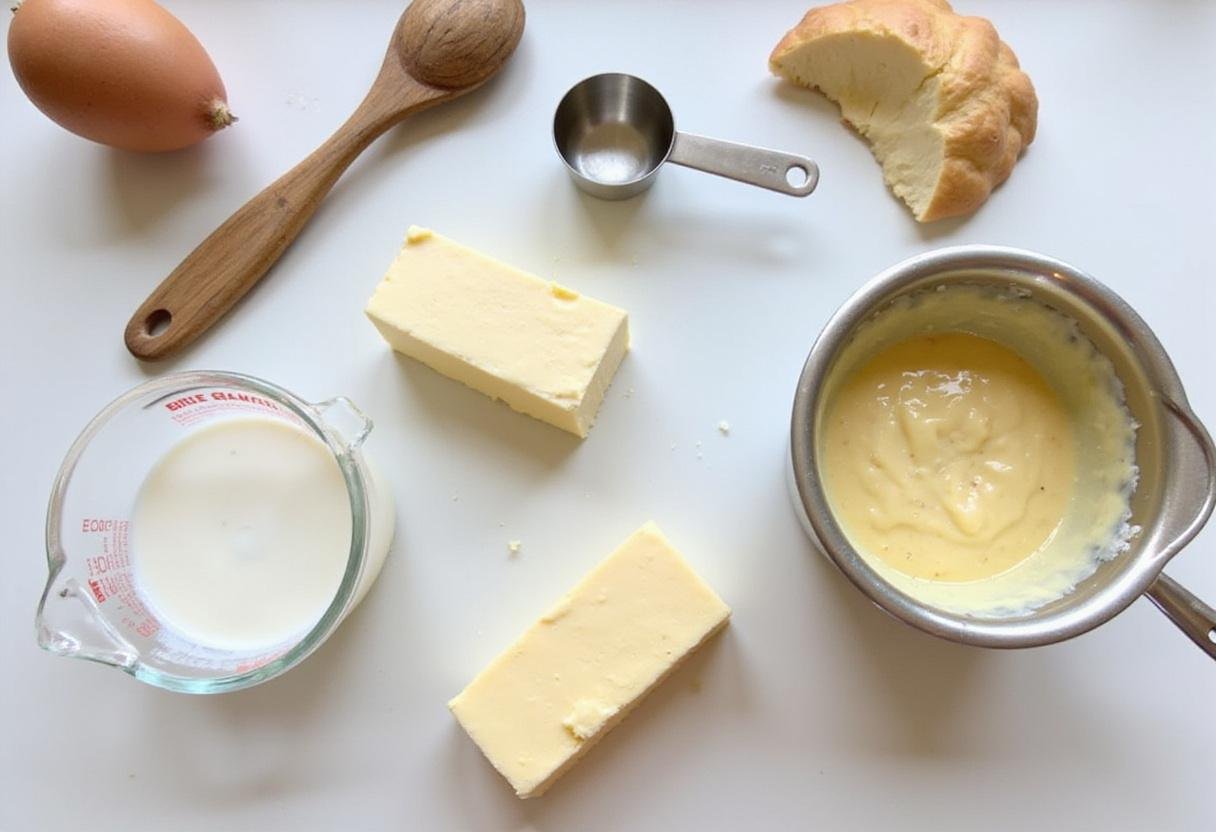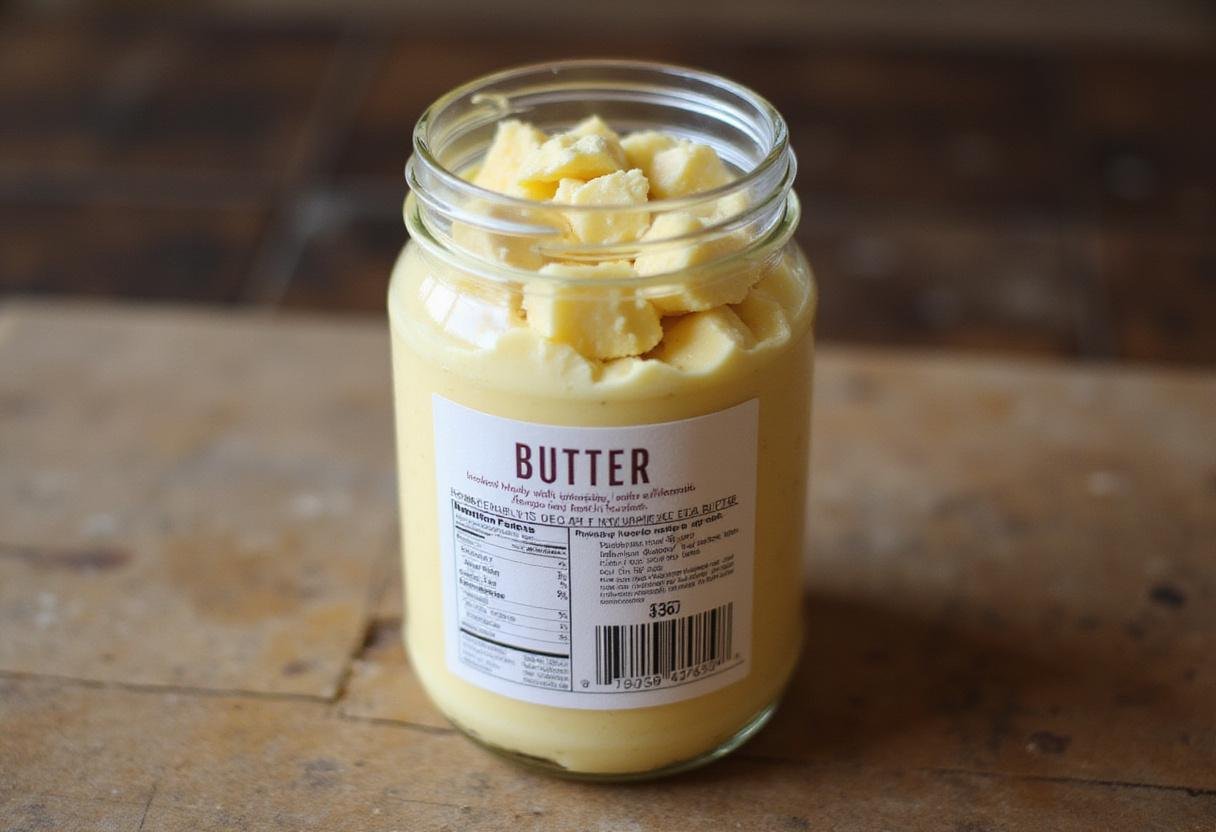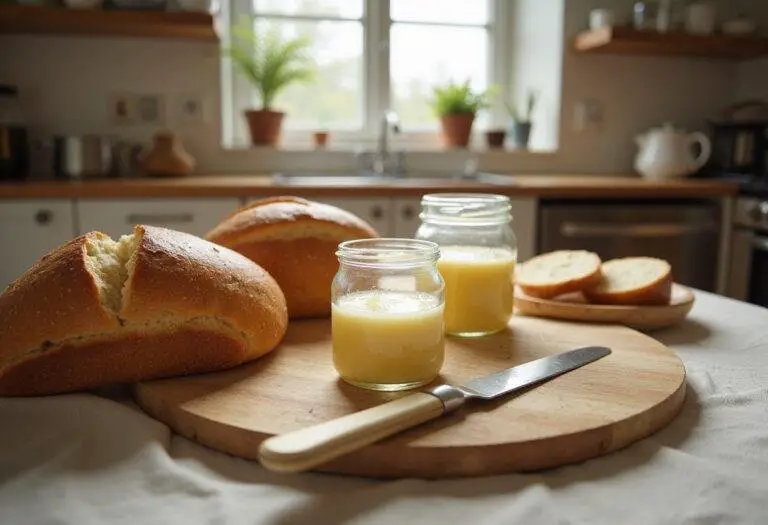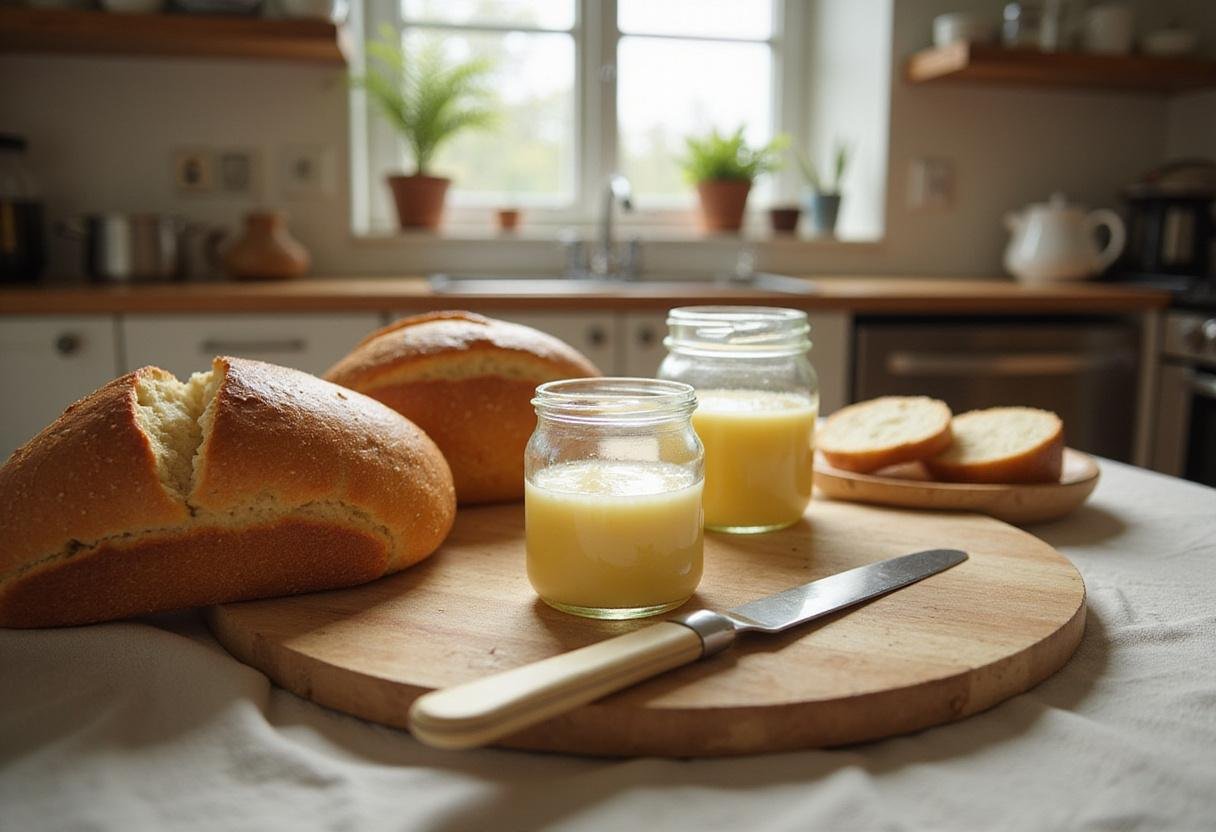Butter Nutrition Label: Everything You Need to Know About This Creamy Delight 🧈🍞✨
1. Introduction: Decoding the Butter Nutrition Label

Butter is more than just a spread; it’s a culinary cornerstone, adding richness, depth, and a velvety texture to countless dishes. But how often do we truly consider what’s inside? Understanding the butter nutrition label is crucial for anyone looking to savor this creamy delight while staying informed about its nutritional content. This article is your comprehensive guide to deciphering the butter nutrition label, breaking down everything from calories and fats to essential vitamins. We’ll explore how to responsibly incorporate this luscious ingredient into your diet. Prepare to unlock the secrets hidden within the butter nutrition label and elevate your cooking experience! If you love butter, you might also enjoy our recipe for Paula Deen’s Corn Casserole!
2. Ingredients Needed for Butter: Simple and Pure
Before we delve into the intricacies of the butter nutrition label, let’s appreciate the simplicity of its creation. Here’s what you need to make butter:
- High-Quality Heavy Cream: The foundation of rich, flavorful butter.
- Salt (optional): A pinch can enhance the taste and act as a preservative.
That’s it! These two ingredients are all it takes to create homemade butter, giving you full control over the flavor and allowing you to meticulously examine the butter nutrition label. Consider trying this with cream from grass-fed cows for a potentially healthier fat profile. Learn more about dairy nutrition here.
3. Step-by-Step Instructions to Make Butter: A Culinary Transformation
Step 1: Gather Your Ingredients – The Foundation of Flavor

Start by assembling your ingredients: fresh, high-quality heavy cream and a pinch of salt if desired. The quality of your cream directly impacts the flavor and the resulting butter nutrition label. Using organic cream can also be a great option.
Step 2: Mixing the Ingredients – From Cream to Butter

Pour the heavy cream into a stand mixer fitted with the whisk attachment. Begin mixing on medium-high speed. Initially, the cream will transform into whipped cream. Continue mixing, and the cream will separate into butter and buttermilk. This process can take anywhere from 5 to 15 minutes, depending on the cream and your mixer. Observing this transformation is key to understanding the elements that compose the butter nutrition label. While waiting, why not check out our Dill Pickle Popcorn Thrill for a unique snack?
Step 3: Shaping Your Butter – Artistry in Dairy

Once the butter and buttermilk have separated, drain the buttermilk. Rinse the butter under cold water to remove any remaining buttermilk. Now you can shape the butter as desired. Use molds for decorative shapes or simply form it into a log using parchment paper. Consider adding fresh herbs, spices, or even roasted garlic for added flavor. These additions will subtly alter the overall butter nutrition label, so keep that in mind!
Step 4: Storing Your Homemade Butter – Freshness Preserved

Store your homemade butter in an airtight container in the refrigerator. For longer storage, you can freeze the butter. Properly stored, homemade butter can last up to two weeks in the refrigerator and several months in the freezer. Don’t forget to label it with the date and a note about any added ingredients, as well as, of course, your personalized butter nutrition label based on salt content or additions! You might also enjoy our recipe for Broccoli Crowns Delight which tastes amazing with butter!
4. Understanding the Butter Nutrition Label: A Detailed Breakdown
Let’s break down what you typically find on a butter nutrition label:
- Serving Size: Usually 1 tablespoon (14g)
- Calories: Approximately 100-102 calories per tablespoon.
- Total Fat: Around 11-12 grams per tablespoon. Pay attention to different fat types such as saturated fats (7-8 grams) and monounsaturated fats.
- Cholesterol: Roughly 30-31 mg per tablespoon.
- Sodium: Varies depending on whether it’s salted or unsalted butter. Salted butter can contain around 90-100mg of sodium per tablespoon.
- Vitamins: Butter contains vitamins A, D, E, and K. The amounts can vary.
Being aware of these values allows you to make conscious choices and incorporate butter into a balanced diet. Remember that the butter nutrition label is a guide, not a restriction!
5. Health Benefits of Butter: Beyond the Fat
Butter, when consumed in moderation, offers some health benefits. It’s a source of fat-soluble vitamins like A, D, E, and K2, which are essential for various bodily functions. Some studies suggest that the saturated fat in butter is not as detrimental as previously thought. Additionally, grass-fed butter contains conjugated linoleic acid (CLA), which has been linked to potential health benefits. Understanding the butter nutrition label in context is key here.
6. Common Misconceptions About Butter: Separating Fact from Fiction
One of the biggest misconceptions is that butter is inherently unhealthy and should be avoided. However, the key is moderation. The butter nutrition label provides the information you need to make informed decisions. It’s also important to consider the source and quality of the butter. Grass-fed butter, for example, has a different nutritional profile than butter from conventionally raised cows. Instead of avoiding butter altogether, consider incorporating it mindfully into your diet. You might find our Rich Intense Chocolate Portions recipe is great when using butter
7. Tips for Incorporating Butter into Your Diet: Savor the Flavor Responsibly
Here are some tips on how to enjoy butter as part of a healthy diet:
- Use it sparingly: A little butter can go a long way in adding flavor.
- Choose grass-fed butter: It offers a potentially better nutritional profile.
- Pair it with healthy foods: Enhance the flavor of vegetables, whole grains, and lean proteins.
- Be mindful of serving sizes: Stick to the recommended serving size on the butter nutrition label.
Butter can be a delightful addition to your meals when used thoughtfully.
8. FAQs: Your Burning Butter Questions Answered
What is the shelf life of homemade butter?
Homemade butter typically lasts for about two weeks in the refrigerator and several months in the freezer, provided it is stored properly in an airtight container.
Is there a difference between salted and unsalted butter regarding the butter nutrition label?
Yes. Salted butter contains added salt, which affects the sodium content listed on the butter nutrition label. Unsalted butter is preferred for baking where precise salt control is needed. Consider using butter for our Vibrant Spinach Fettuccine Dish.
How does grass-fed butter differ nutritionally?
Grass-fed butter often contains higher levels of vitamins and beneficial fatty acids like CLA compared to butter from conventionally raised cows. This can be reflected in a slightly different butter nutrition label analysis, though the core values remain similar.
9. Conclusion: Embrace the Creamy Goodness Responsibly
The butter nutrition label holds the key to enjoying this rich dairy product without the guilt. By understanding its nutritional values, making informed choices, and savoring it in moderation, you can incorporate butter smartly into your diet. So go ahead, enhance your meals with the creamy goodness of butter, all while staying informed and in control of your nutritional intake! Other recipes you might enjoy with butter include Tequila Sour Recipe Classic, Super Potato Milpitas Magic, and Homegrown Lima Bean Recipe.
Print
Butter Nutrition Label
Discover everything you need to know about the Butter Nutrition Label, from its ingredients to its health benefits. Learn how to make homemade butter and understand its nutritional profile for informed dietary choices.
- Total Time: 15 minutes
- Yield: Approximately 1 cup
Ingredients
- Heavy Cream
- Salt (optional)
Instructions
- Gather your ingredients: heavy cream and optional salt.
- Pour the heavy cream into a stand mixer and mix at high speed for about 10 minutes until it transforms into butter.
- Once the buttermilk separates, remove the butter and shape it as desired.
- Store in an airtight container, labeling it with the date and a butter nutrition label.
Notes
- Use quality cream for the best flavor.
- Add herbs or spices for enhanced flavor.
- Homemade butter lasts up to 2 weeks in the refrigerator and can be frozen for several months.
- Prep Time: 5 minutes
- Cook Time: 10 minutes
- Category: Dairy
- Method: Mixing
- Cuisine: Global
- Diet: Gluten-Free
Nutrition
- Serving Size: 1 tablespoon
- Calories: 100 Kcal
- Sugar: 0g
- Sodium: 0-70mg
- Fat: 11g
- Saturated Fat: 7g
- Unsaturated Fat: 3g
- Trans Fat: 0g
- Carbohydrates: 0g
- Fiber: 0g
- Protein: 0g
- Cholesterol: 31mg

